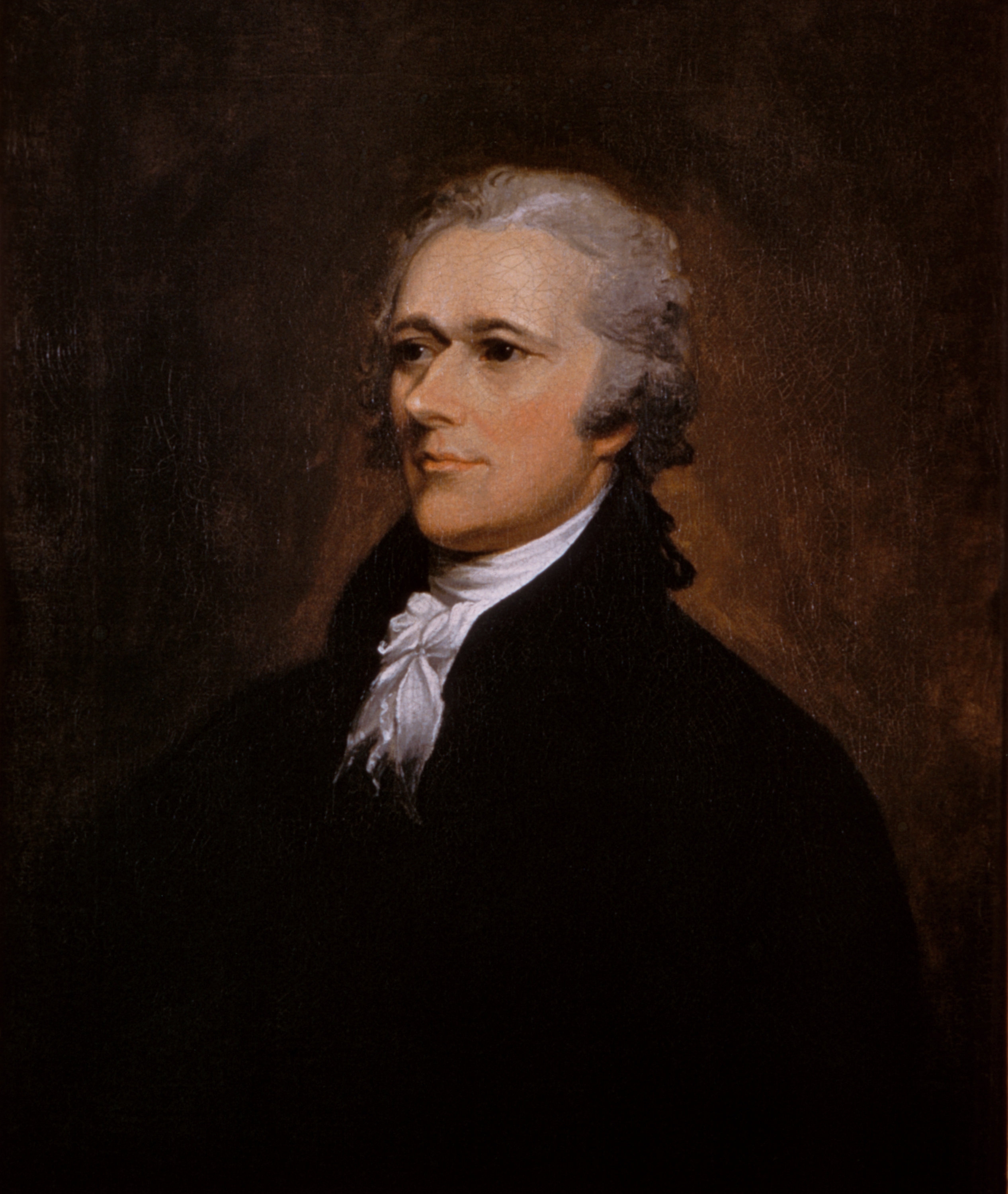I had decided to major in history long before I knew I had a historical namesake, but it was one of the first things I learned in college. During a meet and greet with the history department, I met the historian of Antebellum America and introduced myself.
"Hello, Maria Reynolds, nice to meet you," I offered.
He looked at me a little funny and said, "Maria Reynolds???"
"Yes?", I responded.
I wondered how I could have provided the wrong answer to the simplest of questions. Once he realized I was not joking and I was entirely clueless, he explained: "Did you know Maria Reynolds was the name of Alexander Hamilton's mistress?" I did not, but I had discovered my historical namesake...my personal connection to history. Since I was named after the Julie Andrews character in The Sound of Music, I am fairly certain my parents had no prior knowledge of the Maria Reynolds that preceded me in history, but I do not mind. If I had lived in the 1790s I might have minded. I mean, could you imagine having the name Monica Lewinsky in 1990s?
It is all well and good to write a blog entry about my own personal historic namesake, but I am sharing my personal story because it also has a connection with the Staatsburgh story. Certainly it was the relationship to Staatsburgh that made this story stand out to me in the first place...
I had not thought about Alexander Hamilton in some time, but I recently visited Schuyler Mansion State Historic Site in Albany, NY and discovered that Philip Schuyler's daughter Elizabeth married Alexander Hamilton. I felt empathetic toward Elizabeth Hamilton who must surely have suffered at the hands of the 18th century Maria Reynolds who was at least partially responsible for severely damaging the reputation and political career of her husband.
 |
| Elizabeth Schuyler Hamilton (1757-1854) |
The story of Maria Reynolds and Alexander Hamilton is not a story of star crossed lovers, but rather one of blackmail, lies, and deceit. In 1791 Hamilton took pity on the 23 year old Maria Lewis Reynolds after she sobbed to him that her no-good husband had abandoned her and her daughter. He said he would bring her food and money later that evening. He did and she subsequently invited him into her bedroom.
Yet Reynolds had not been abandoned by her husband (although he was no good) and some historians, in addition to Hamilton himself, believed that the two had conspired to set up Hamilton. James Reynolds had no interest in challenging Hamilton to a duel, which was the custom, but instead he threatened to go to the press unless Hamilton gave him money. The affair lasted two more years and Hamilton paid over $1000 to James Reynolds to continue the affair without interference.
James Reynolds soon accused Hamilton of treasury misconduct which led to Hamilton openly admitting and apologizing for the affair (the lesser of the two evils) in a pamphlet he wrote and published. He proclaimed,
"The charge against me is a connection with one James Reynolds for purposes of improper pecuniary speculation. My real crime is an amorous connection with his wife, for a considerable time with his privity and connivance, if not originally brought on by a combination of the husband and wife with the design to extort money from me"
 |
| Alexander Hamilton (1755 or 1757 - 1804) |
In what was one of the first American political sex scandals, Hamilton admitted to the affair with surprising candor and published letters between himself and Maria to prove the affair and deny any treasury wrongdoing. He inexplicably provided many intimate details about the affair, which in the end greatly wounded his reputation. After the affair, Maria Reynolds receded into the annals of history, but we do know that she later divorced her then imprisoned husband and her divorce lawyer was none other than Aaron Burr, the man who would mortally wound Hamilton in a duel. Aaron Burr and Hamilton had been at odds for some time, but the final straw between the two men was the 1804 New York gubernatorial race.
Burr was running for governor and Hamilton actively campaigned against him and for his opponent, Morgan Lewis. Burr ended up losing the race to Lewis, the great-grandfather of Ruth Livingston Mills and original inhabitant of Staatsburgh. Hamilton's endorsement did not play a large role in the fact that Morgan Lewis won the race in a landslide, but it angered Burr nonetheless. After the race, the Albany Register published letters indicating Hamilton's opposition to Burr and cited a dinner gathering where Hamilton had expressed a despicable opinion of Burr. Burr saw this as an attack on his honor and still stinging from his election loss, he challenged Hamilton to the duel that resulted in Hamilton's death.
 |
| Hamilton and Burr met on July 11, 1804 in Weehawken, NJ along the Hudson. |
.JPG) |
| The 21st Century Maria Reynolds leads a tour at Staatsburgh. |
(Incidentally, the 21st century Maria Reynolds also spoke about the Hamilton / Burr duel on Episode 3 of the 2014 Travel Channel show, Hotel Secrets & Legends)

But her name was pronounced like more-eye-uh, if you’re named after the Sound of Music- wouldn’t yours be Marie-uh?
ReplyDelete